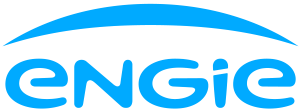By signing with Mercedes-Benz Trucks on 20 May 2021, ENGIE has become the first energy company to partner with the major manufacturers of heavy electric mobility. But where do we stand in the development of the electric heavy vehicle fleet? What are the challenges facing manufacturers and energy providers?
Heavy mobility: here we go!
With sales of electric trucks more than doubling by 2021, the trend towards greener trucks and buses is increasing. However, they only account for 0.1% and 4% of the world's fleets respectively. The tipping point is approaching, however, as pressure from European legislator is making himself felt, accompanied by a heavy transport sector, with a heavy transport sector, from manufacturers to contractors, which is in turn starting to decarbonise.
For example, limit emissions of particulate matter and nitrogen oxides as well as noise pollution, 320 low-emission zones are being set up in cities in 13 European countries.
By 2025, this measure will concern all urban areas in France that have 150,000 inhabitants. In Europe, to meet the CO2 emission targets imposed by the EU, around 200,000 electric trucks will have to be on the road by 2030. This is a considerable challenge at a time when only a few thousands are currently on the roads, but the forthcoming reduction in operating costs, which will eventually be comparable to those of diesel, will change the situation.
It's a considerable challenge, making heavy mobility more complex to deploy in an electric fleet, compared to light vehicles. But what are the conditions for this deployment?
Key figure
670 000 electric bus and 66 000 electric trucks are driving around the world. (Source: IEA 2021)
How can we promote electric mobility?
Heavy mobility consists of, on the one hand, vehicles that travel long distances (freight trucks), and on the other, smaller urban and suburban trucks that travel shorter distances. The current use of batteries limits the range of trucks and buses to 300 km. Providing charging terminals in towns and local regions is therefore key: to meet the regulatory targets, at least 17,000 public charging terminals need to be deployed by 2025, of which 13,000 must offer charging power of over 100 kW. This figure is set to rise from then on, with a final target of 90,000 charging terminals by 2030. However, in spite of this considerable effort to equip the sector, electric mobility is less suited to long distances and will therefore remain the predominant mode of transport for heavy vehicles in and around cities.
The need to keep the cost of electric mobility under control, to find out about the installation of charging terminals, to schedule them on routes, while operating as smoothly as with diesel mobility so as not to lose productivity... Heavy electric mobility is leading to a complete rethink of the entire value chain for bus and truck fleet operators.
Key figure
90,000 charging terminals by 2030.
ENGIE, the promise of the "Fuel Mix"
At ENGIE, we're convinced that the answer lies in combining them and in the complementarity of clean fuels, based on customers' needs and the local context. We are therefore present in electric mobility, as well as in NGV, bio-NGV and hydrogen, in a two-fold capacity, as operators of infrastructures and suppliers of these clean fuels!
So it's a case of responding to out-of-the-ordinary demands, such as the rapid charging of trucks with increasingly powerful chargers. But also being able to produce clean energy locally, with photovoltaic panels on the roofs of depots for example, store electricity on site or offer an intelligent recharging solution based on renewable energy. Given the scale of these challenges, we propose a "fuel mix", which combines electric mobility and green fuels.
Like the energy mix, which promotes the use of a variety of energy sources, the "fuel mix" offers clean and complementary fuels, offering not only low-carbon production but also low-carbon use. We are one of the few energy companies capable of recommending this energy, selling the associated infrastructure, installing it and supplying the fuel thanks to our NGV (Natural Gas for Vehicles) or bio-NGV offer, an economic and technological solution that is immediately available and offers a real reduction in greenhouse gas emissions. This solution is deployed, for example, in the multi-fuel station at the Rungis international market in France, which refuels commercial vehicles with NGV and hydrogen.
The long-term goal is to rely on compressed green hydrogen, which will offer a range of 400 km, and then on liquid hydrogen for long-distance travel.
In the same way as electricity, these fuels respond to the heavy transport sector's desire to decarbonise its fleets and reduce their impact on urban environments in terms of noise. Thanks to this "clean fuels" mix, ENGIE can accompany its customers on their journey towards carbon neutrality.
Daimler put their trust in ENGIEThe top-of-the-range manufacturer Mercedes-Benz Trucks has called on ENGIE for their integrated approach. With this partnership, the freight transport operator will benefit from an integrated electrification service for its fleet of heavy vehicles in seven European countries. The German manufacturer will supply the electric trucks and the software for intelligent control of the charging process; ENGIE will study, design and supply the electrical equipment and charging infrastructure, as well as ensure their maintenance; the contract also provides for the delivery of an intelligent and scalable high-power charging solution tailored to each customer. |
Find out more
ENGIE offers intelligent charging in Rotterdam
In Zeebrugge (Belgium), wind turbines… in the electric vehicle charging area
